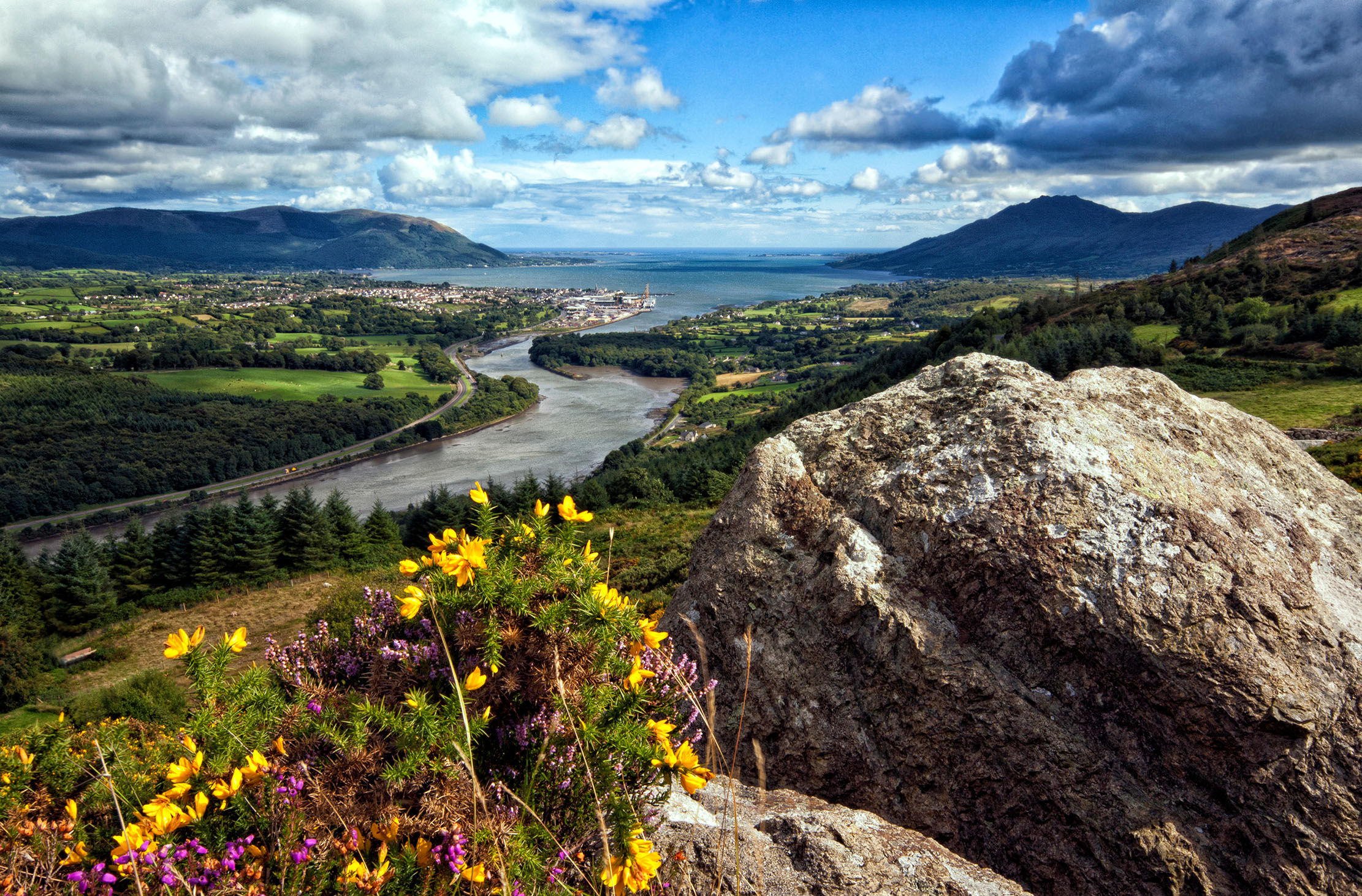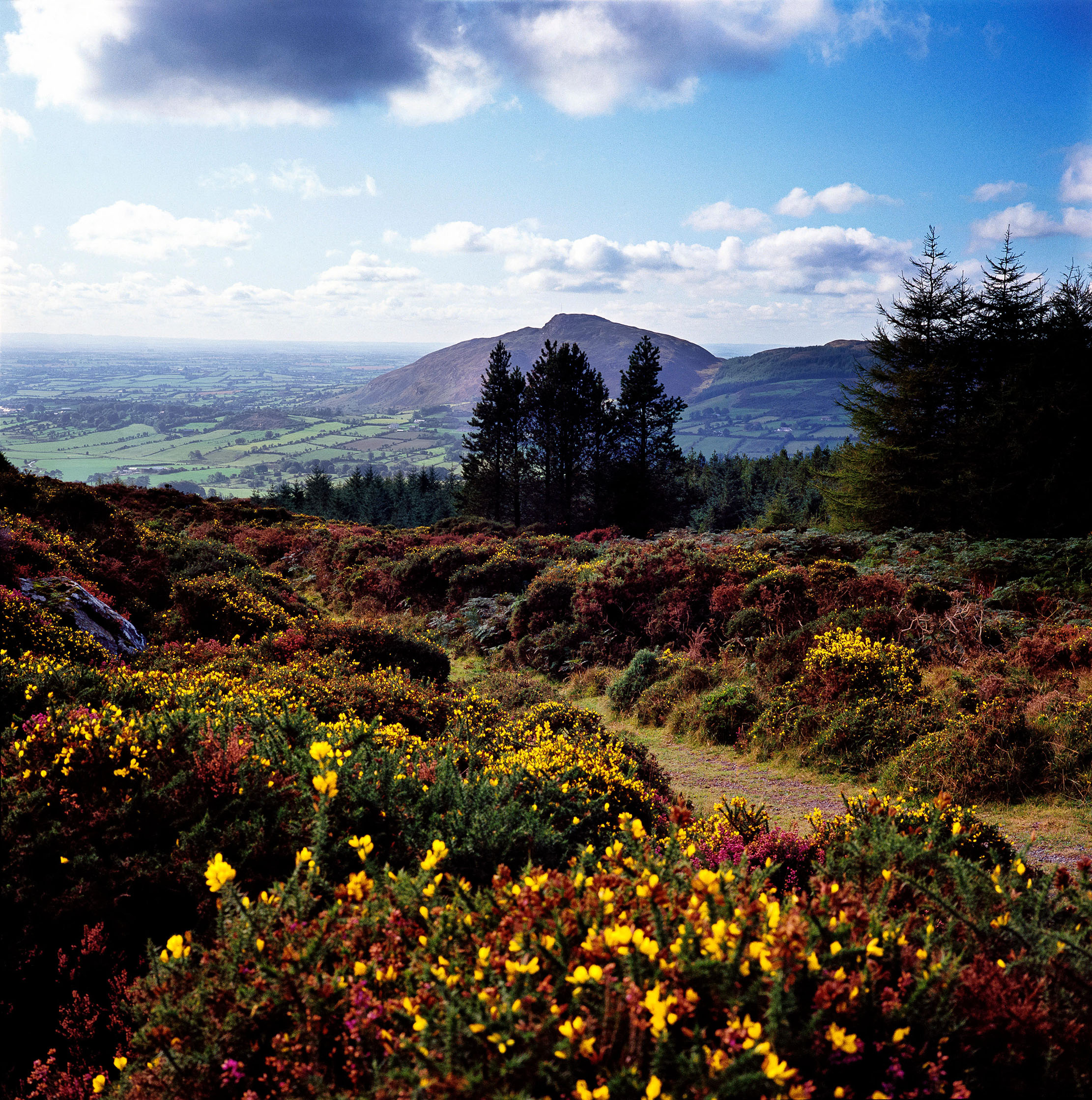The Ring of Gullion AONB: 'A landscape rich with archaeology and mythology, ancient churches and castles'
John Goodall looks at a spectacular part of Northern Ireland that's full of legends and myths.


About 58 million years ago in what is now Co Armagh, a violent volcano subsided into its magma chamber. The movement created an encircling network of fractures that, in turn, spewed forth molten rock to create one of the most perfect examples of the geological formation known as a ring dyke in the British Isles. It was also the first to be mapped and identified, in 1909.
Successive ice ages have softened what must have been a blasted volcanic landscape. The Ring of Gullion as we know it today comprises a great circle of hills — Crosslieve, Mullaghbane Mountain, Slievenacappel, Anglesey Mountain, Flagstaff and the Sugar-loaf Mountain — nearly seven miles across with a peak, Slieve Gullion, at its centre. Built up of layers of igneous rock, this mountain, the heart of the ancient volcano, possesses a slightly stepped profile.
To its south-east are the Cashel Loughs, which have formed in an ice-scoured rock basin, providing habitat for plants such as marsh St John’s wort, western gorse and white water lily, as well as 30 species of water beetle.
The present 60 square mile AONB was constituted in 1991 (although parts of it were designated in 1966), with upland heath, forest, lakes, bogs, fen, woodland and farmland and a wealth of accompanying wildlife, such as pine martens, otters and a closely monitored red- squirrel population.
It’s a landscape rich with archaeology and mythology, ancient churches and castles, even Ireland’s oldest dateable Christian monument, the Kilnasaggart Pillar Stone, a granite monolith 9ft high, cut with crosses and a Latin inscription thought to date to about 700AD.

The Ring of Gullion contains the remains of some 20 large stone tombs. South Cairn on the summit of Slieve Gullion is the highest surviving passage tomb in the British Isles.
In 1789, locals opened it up to search for the bones of the legendary Calliagh Berra, an old hag who transformed into a beautiful girl to entice the mythical warrior hero Fionn Mac Cumhaill — perhaps better known as Finn McCool — to retrieve the golden ring she had dropped in the lake there.
Exquisite houses, the beauty of Nature, and how to get the most from your life, straight to your inbox.
The hero emerged to be greeted by a cackling witch and to discover that his hair had turned white; present-day swimmers are warned that the same fate could befall them.

John spent his childhood in Kenya, Germany, India and Yorkshire before joining Country Life in 2007, via the University of Durham. Known for his irrepressible love of castles and the Frozen soundtrack, and a laugh that lights up the lives of those around him, John also moonlights as a walking encyclopedia and is the author of several books.